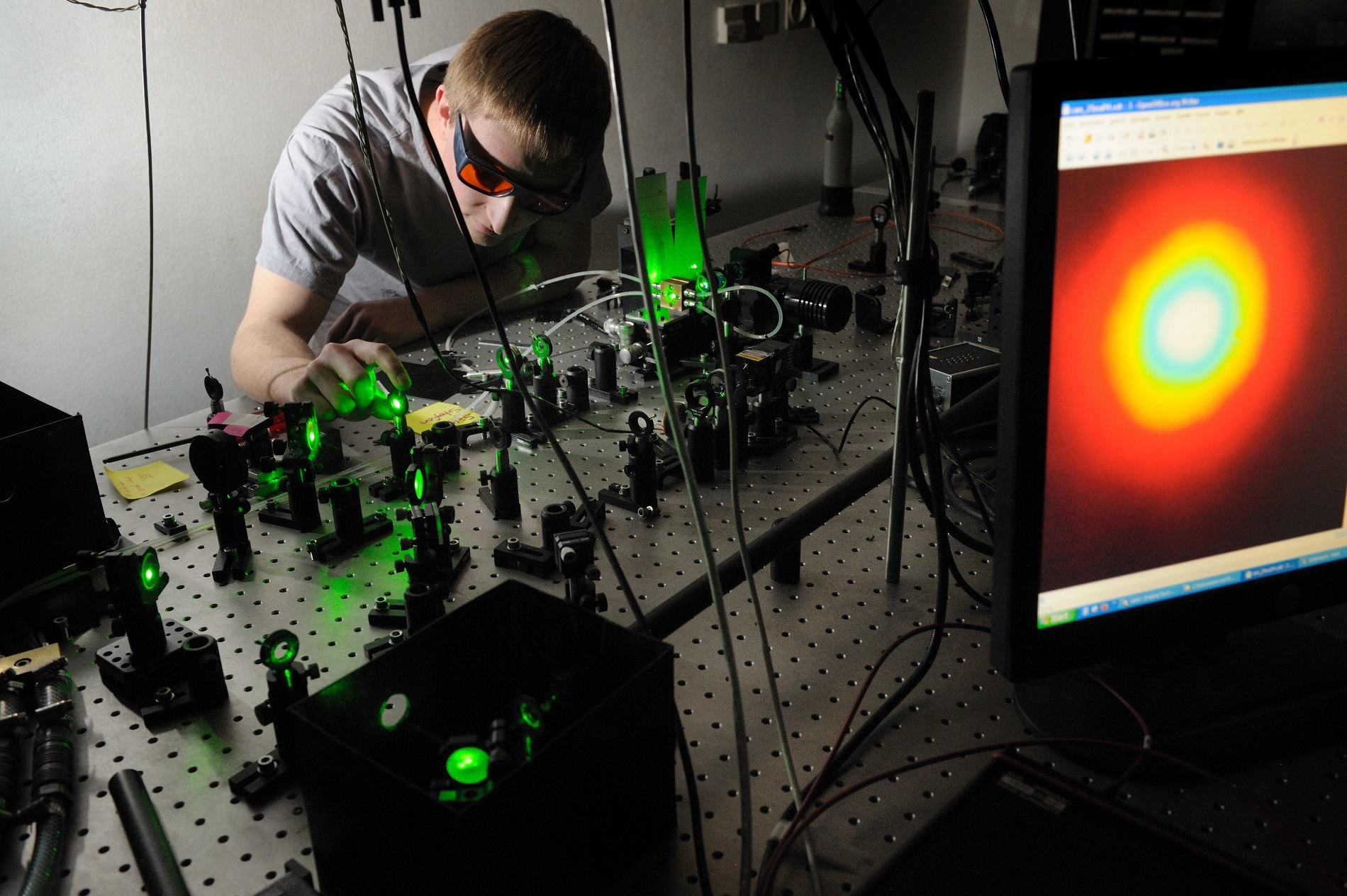14 June 2018
Bernese researchers have taken an important step towards new measurement methods such as quantum spectroscopy. In an experiment, they succeeded in uncovering part of the mystery surrounding the so-called "entangled photons" and gaining fine control on the measured correlations.
Quantum technologies hold the promise to go beyond the capabilities of classical present technologies by making use of pure quantum phenomenon, such as "entangled particles". Quantum technologies are used in various applications, for example in quantum computers or in quantum sensing and metrology, which allows for imaging with higher resolution or determine more accurately properties of atoms and molecules.
Entangled particles
Entanglement is one of the most impressive quantum physical phenomena. It describes the property of two particles not behaving like two independent objects, but like a single physical object. The entanglement is not to be understood spatially: Entangled particles correlate with each other in terms of their properties. This means that if you change the properties of one particle, the other particle changes at the same time, no matter where it is. Particles of light (photons) can be entangled by splitting a single particle into two photons in a laser arrangement with a special crystal. In optics, entangled photons are a major component in the development of new quantum measurement methods. They can be used because the measurement capacity of an entangled photon pair is larger than the one of two individual photons. However, quantum entanglement leads to the observation of relationships between measurements at the photon pairs, which can only be explained quantum-mechanically and not with concepts of classical physics.
Until now there has been no method to produce photon pairs that do not show quantum mechanical, but only classical energy correlations. In an experiment, a research team of the Institute of Applied Physics at the University of Bern has now succeeded in transforming the observed correlations of photon pairs from purely quantum-mechanical to completely classical. This transition represents a novelty, since quantum and classical correlations are difficult to reconcile. The researchers were able to demonstrate the transition in an experiment with a new method in which they were able to control the correlation of the energies of two photons. The results were published in the journal Nature Communications Physics.
Shaking the photons
The entanglement of the photons is a so-called "energy-time entanglement", since the photons correlate with respect to both the emission time and the energy. Both correlations can be observed experimentally and allow conclusions to be drawn about each other. But since the researchers wanted to detect only the correlations in time of the photon pairs, they had to grab into their bag of tricks: "In order to form such pairs, we randomly shook the photons, so to speak," explains Dr. Stefan Lerch, lead author of the study. By doing that, the researchers induced a perturbation. "The more perturbation was added, the less did the photons behave in a quantum way."
To change the quantum state of the photons, the researchers made use of techniques which are usually applied for the shaping of ultrashort laser pulses. "The know-how, that was developed at the University of Bern within the frame of the NCCR MUST was essential to achieve the precise control needed", notes study co-author Prof. Dr. André Stefanov.
The most promising potential application of energy-time entangled photons is spectroscopy, a physical method to investigate properties of molecules with light. "I expect entangled photon spectroscopy to be a ground-breaking new way of performing optical spectroscopy," says André Stefanov. It remains however to be experimentally demonstrated. The findings of the Bernese researchers are an important step on this path. "I am convinced that such a setup will be an essential component of future quantum spectroscopy experiments," adds André Stefanov.
Publication details:
Stefan Lerch and André Stefanov: Observing the transition from quantum to classical energy correlations with photon pairs, Nature Communications Physics, 13 June 2018, in press.
Publication in «Nature Communications Physics»













